Osteochondrosis, as the most common spinal disease, occurs today in people of completely different ages, though not long ago was considered an exclusively age -related disease.It is characterized by the emergence of degenerative-district changes in the intervertebral discs, which leads to pain and creates prerequisites for the formation of extensions and intervertebral hernia.The disease can affect any part of the spine, although osteochondrosis of the thoracic region is extremely rare.This causes considerable difficulty with its diagnosis because the symptoms of the disease mimic the pathologies of the cardiovascular system.However, if a diagnosis is made, it is important to immediately begin treatment for thoracic osteochondrosis.Otherwise, it can cause extremely serious complications and performance loss.
The opinion of a doctor's expert
"Since there are many nerve endings in the intervertebral discs, any changes in its structure leads to the transmission of the corresponding signals in the brain, resulting in the appearance of pain in the affected area."
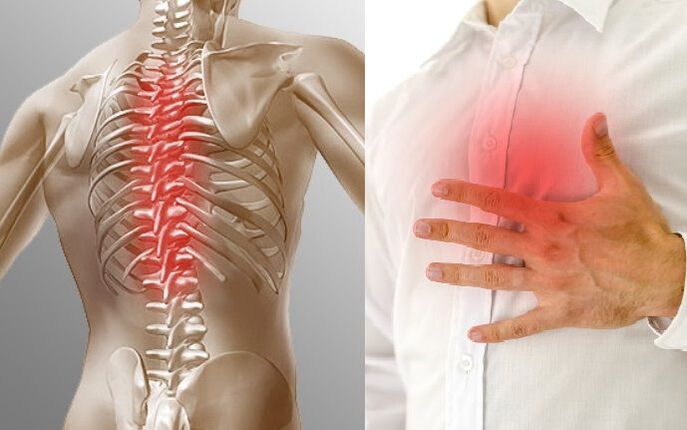
What is the thoracic osteochondrosis and the features of its treatment
The osteochondrosis of the chest spine occurs in less than 10% of the total number of cases diagnosed with the disease.This is due to the low mobility of the spine of the chest.But this is the main awareness of thoracic osteochondrosis, as its symptoms in many ways remember signs of cardiovascular system diseases.Therefore, patients often first turn to a cardiologist or other specialist and undergo treatment courses that do not produce results, but end up seeing a neurologist when the disease has already become advanced.
There are 12 beads in the thoracic back.Among them all have intervertebral discs, but most often the first and last segments of the spinal movement of this department are affected by osteochondrosis.
In the future, the situation may be complicated by compression of the spinal roots, which emerge in pairs at the level of each vertebra from the spinal cord and are responsible for regulating the functioning of the lungs, internal organs of the abdominal cavity and pelvis.As a result, there will be signs of concern in their function, as well as pain that radiates to the ribs, which is called radical syndrome.
In general, thoracic osteochondrosis may appear on its own:
- shoulder blade pain, which intensify with deep inspiration;
- pain after sternum in the heart area;
- the appearance of cough, shortness of breath due to the development of bronchitis, bronchial asthma, pneumonia and other lung and bronchitis diseases;
- Pain in the proper hypochondrium, which comes from the breakdown of the liver, gall bladder and its ducts, which can be due to the development of cholecystitis, metabolic disorders, etc.;
- pain in left hypochondrium or herpes due to pancreatic dysfunction, which leads to an increased risk of developing diabetes;
- decrease immunity, the appearance of allergic reactions due to suppressing adrenal gland intrigue;
- urinary disorders due to kidney dysfunction and increased infectious diseases, in particular pyelonephritis;
- Disordishes of female and male genitals, including infertility.
In this case, severe pain provokes reflex tension in the posterior muscles, which causes unpleasant sensations in them and increases the risk of pinch nerve structures.
The risk of changes in the functioning of the internal organs increases significantly in the later stages of the development of thoracic osteochondrosis, when the extension of the intervertebral discs is already observed, ie.formation of protrructions and intervertebral hernia.In such situations, the pathological extension will compress the nerve roots, which will provoke concerns in the intrigue of the respective internal organs and the development of their diseases.
Thus, although thoracic osteochondrosis is a very rare disease, it can affect the functioning of the whole body.Therefore, it requires the immediate onset of comprehensive treatment.To do this, you should contact a neurologist who will evaluate the patient's condition, study the available results of the examination, and develop an individual treatment program.It will mainly depend not only on the degree of thoracic osteochondrosis (there are 4 stages, of which the easiest is 1), but also by the nature of the manifestations of the disease, the type of associated diseases, age and a number of other factors.This is why, with the right approach, treatment of patients with approximately the same degenerative changes in the discs can be significant differences.
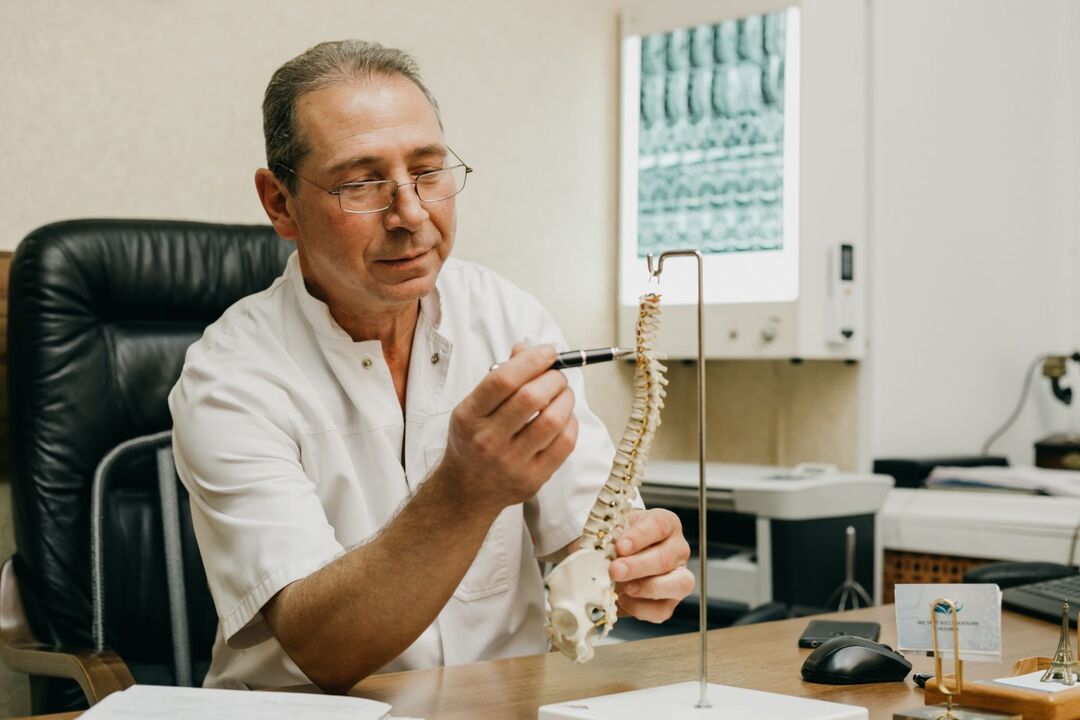
The treatment of thoracic osteochondrosis is always complex.It aims to solve the following problems:
- Elimination of the unpleasant symptoms of the disease, which improves the quality of life of the patient and restores complete functionality;
- Improving the quality of blood circulation in the affected area, which activates metabolic processes and will facilitate disk regeneration processes;
- elimination of the causes of osteochondrosis;
- Reducing the likelihood of complications of the disease.
For this, patients can be described:
- Life style correction;
- medication therapy;
- Exercise therapy;
- manual therapy;
- attractive therapy;
- Physiotherapeutic treatment.
What specific methods will be recommended for the patient are determined by the attending physician, depending on the severity of degenerative-district changes in the spine.So if thoracic osteochondrosis is diagnosed in stage 1 of development, which, unfortunately, is quite rare, is usually enough to limit yourself to making certain lifestyles, exercise therapy and manual therapy.
But if the disease has already progressed in the 2nd phase and especially in the 3rd stage, additional medication therapy, attractive therapy, etc. will eventually be recommended.Moreover, if osteochondrosis has already provoked the formation of intervertebral hernia, especially large ones, and is associated with severe radicular syndrome, which cannot be eliminated by conservative methods, it is possible to achieve an improvement in the patient's condition only with the use of surgery.
Thus, with thoracic osteochondrosis, as well as similar lesions in other parts of the spine, the treatment is aimed at stopping the further progression of degenerative changes in the intervertebral discs and the improvement of the patient's well -being.With existing lesions, especially large, it is not yet possible to achieve complete restoration of cartilage tissue, not only the intervertebral discs, but also of any other nodes.So let's look at the main methods of treatment of thoracic osteochondrosis and their features.
Lifestyle correction
After diagnosing thoracic osteochondrosis, the doctor necessarily recommends making certain changes in your usual lifestyle.If a patient shows signs of excess weight, he is advised to take measures to reduce it.But any diet for weight loss, especially monocomponent, are contraindicated.Food must be complete and varied so that the body gets all the substances needed for proper functioning, and the metabolic processes in the intervertebral discs continue properly.Therefore, it should match as fully as possible with the principles of rational food.
It is also recommended that all patients increase their level of physical activity, especially those who lead a sedentary lifestyle.This can be every day walking, swimming, yoga or pilates.But serious physical activity, in particular intense training on simulators, dance sports and weight lifting are contraindicated.

If the patient's profession involves heavy physical work, such as severe raising, it is recommended to try to change it.This is due to the fact that increased loads in the back in the presence of osteochondrosis can play the role of a cause for the rapid progress of degenerative changes in the discs.
Absolutely all patients with thoracic osteochondrosis are recommended to change the mattress in a medium orthopedic stiffness as well as buy an orthopedic pillow.This will ensure that the physiological curves of the spine are maintained and will prevent further disk degeneration.
Drug treatment of thoracic osteochondrosis
When treating osteochondrosis, patients are usually prescribed a complex of medication.Some of them are recommended to be taken only occasionally, especially when deteriorating the disease, while others should be used in courses whose duration is chosen by the doctor.
When prescribing specific medicines, the neurologist should find out if the patient has disease at the same time and their nature.This is necessary to exclude contraindications to take certain medicines.
In general, for the thoracic osteochondrosis, the following medication groups can be prescribed:
- NSAIDS;
- corticosteroids;
- muscle relaxants;
- vitamins;
- chondroprotectors;
- products for current use;
- means to improve microcirculation.
Nsaids
Josteroidal anti-inflammatory drugs are one of the wider groups of medicines, as they have a large list of indications for use, which includes thoracic osteochondrosis.They have anti-inflammatory and analgesic properties, so they are indicated for the irritation of the disease and the appearance of pain.
Today, there are 4 generations of NSAIDs, among which 4th generation medicines are considered safer and more effective.They are distinguished by their selective action and practically have no adverse effect on the gastric and duodenum mucosa.At the same time, previous medicines in this group should not be used, especially for a long time in the presence of gastritis and peptic ulcers of the stomach and duodenum, as they can cause their irritation.
NSAIDs are available in almost all possible forms of dosage, which allows you to select the medicine according to the method of use.Therefore, in the early stages of thoracic osteochondrosis, the use of ointments, gels or creams is indicated.For stronger pain, preference is given to capsules or tablets, and if there is no effect, intramuscular injections of the medication are allowed.
Corticosteroid
Drugs in this group belong to the hormonal group and contain synthetic analogues of adrenal hormones.Therefore, they have a powerful anti-inflammatory effect and are indicated for severe inflammatory processes.But due to the possibility of causing a number of negative side effects, they are usually described in the form of injection solutions and only in short courses.
Moreover, corticosteroids in combination with local anesthetics are used to perform paravertebral blocks.They are shown for very severe pain that deprive a person from his ability to work, but can only be performed in a medical institution.Blockades help to relieve the pain quickly even severe and consist of introducing a solution prepared into spots near the spine, in the area where the spinal roots pass.
It is recommended to perform such procedures no more than 4 times a year.
Muscle relaxants
Muscle relaxants are a group of medicines designed to relieve muscle spasms.Let us remember that they often act as a response to the body's reflex to pain.Therefore, the use of muscle relaxants will help reduce the severity of pain in the thoracic osteochondrosis.
Vitamin
When treating thoracic osteochondrosis, vitamin complexes containing increased amounts of vitamins B can also be prescribed.It is necessary to improve the quality of the passage of bioelectric impulses along the nerves, which is especially important in the case of radical syndrome.In this way, the development of concerns in the functioning of organs innovated by the spinal roots of the intervertebral discs located at the level of the lesion is prevented.
Chondroprotectors
Chondroprotectors are a relatively new group of actively prescribed medicines for thoracic osteochondrosis.As active ingredients, they mainly contain compounds that are absolutely natural to the human body and are used by it for regeneration of intervertebral discs and other cartilage.
But at the same time, there is still no convincing proof of the effectiveness of medication from this group in advanced forms of osteochondrosis, though in the early stages they work quite well.At the same time, the natural origin of the chondroprotectors provides a high level of security.
These medicines are available in various forms, including capsules, current preparations, powders and injection solutions.The best results are observed with the administration of injection chondroprotectors.But despite all the positive aspects of medicines in this group, they are characterized by a high cost, which, combined with the need to use them in courses for 30 days or more, makes their use non -accessible to everyone.
Current products
In addition to ointments, creams and gels containing NSAIDs and chondroprotectors discussed above, the treatment of thoracic osteochondrosis may include the use of heat and irritating agents in the country.Their principle of action is based on irritation of the skin receptors at the site of application.This leads to the active blood flow to the application area, and therefore a flow of nutrients.As a result, the quality of the food of the intervertebral discs improves, and the pain decreases.
Products for Improving Microcyrulation
Drugs in this group are also used to improve the quality of blood circulation and to activate metabolic processes.
Exercise therapy
Physical therapeutic education plays one of the key roles in the treatment of thoracic osteochondrosis, as it allows:
- strengthening of muscle lanes, which will ensure the creation of high quality support for the spine;
- normalize muscle tone;
- Activate blood circulation, which will improve the flow of metabolic processes in the affected intervertebral discs.
But patients need to understand that the use of general groups of exercises can adversely affect the course of illness and well -being, as they do not take into account the individual characteristics, the degree of osteochondrosis and the existing illness.Therefore, for effective treatment of thoracic osteochondrosis, it is necessary to develop an individual exercise therapy program.
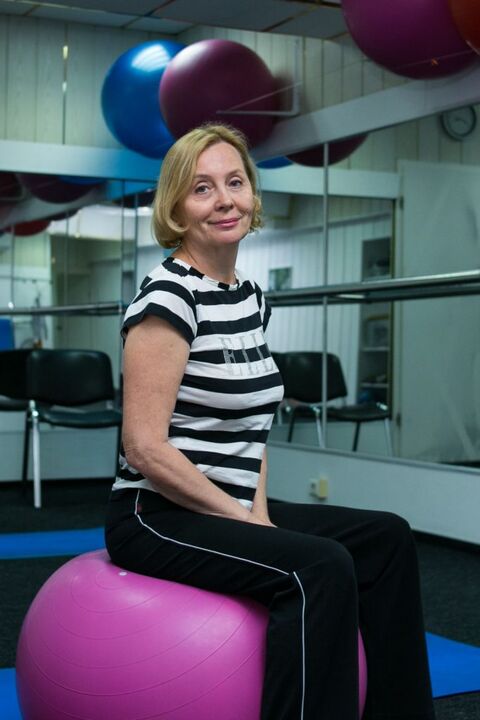
Initially, in order for the patient to master the right exercise technique, it is recommended to exercise under the supervision of an exercise therapy instructor.It will be able to accurately calculate the load in accordance with the level of physical development of a person and adjust its movements so that the exercises performed bring the maximum benefit.The program will gradually become more complicated, and once fully mastered, the patient can practice at home.But for the classes to give good results, they must be performed daily.
When performing all therapeutic exercises, it is important to avoid sudden movements.
Manual therapy for thoracic osteochondrosis
One of the most effective ways to treat thoracic osteochondrosis is manual therapy, as it not only allows you to process the muscles well, but also involves the influence of the spine.This differs from therapeutic massage, which is also very useful for osteochondrosis, but is unable to have the same effect as manual therapy, as it does not include the spine.
But for manual therapy to bring only benefits, you have to be careful when choosing a specialist to perform it, because the effect on the back must be performed accurately pinpoint.Otherwise, there is a high risk of complications.
Manual therapy sessions begin with hitting and relaxing muscle.The doctor works well in each area of the back, eliminating spasms and soft tissue preparation for more active action.After that, he begins to use mobilization and manipulation techniques, which can sometimes be accompanied by discomfort and slight compression.
The method of manual therapy, which is distinguished by the use of special techniques that have proven themselves over 20 years as one of the most effective, deserves special attention.They allow not only to have a beneficial effect on the intervertebral affected discs, but also to improve the quality of functioning of all internal organs, because, as mentioned above, they have a close relationship with the spine.
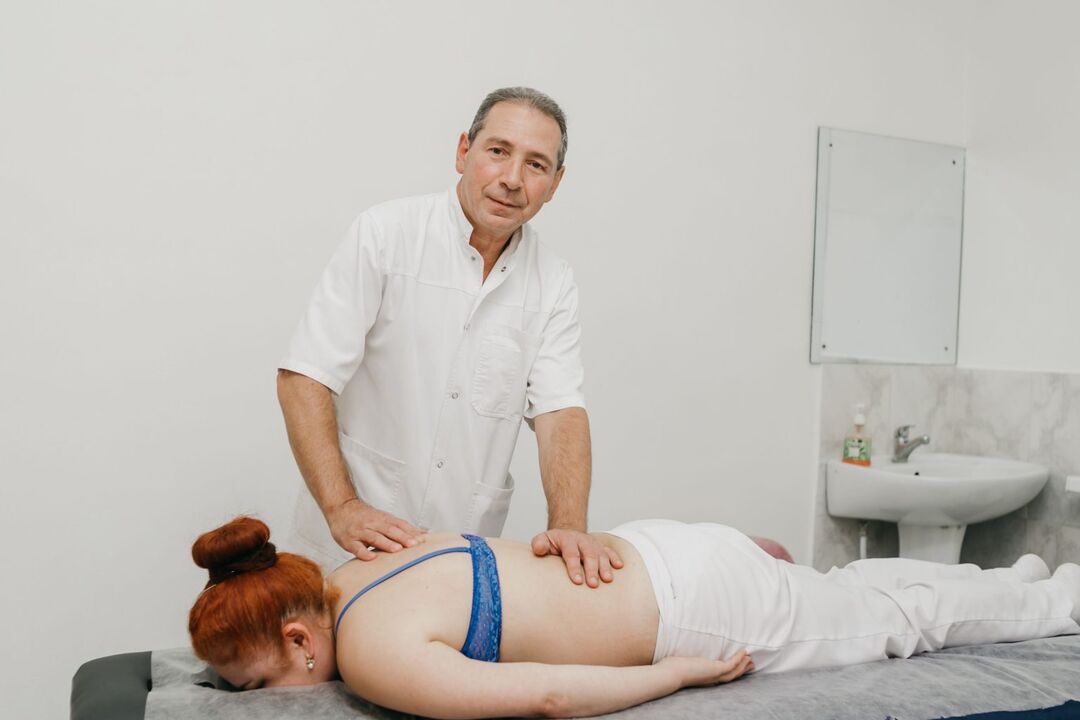
In general, a course of manual therapy sessions provides:
- Restoration of the correct anatomy of the spine with the return of vertebrae to their designated places;
- increasing the distance between vertebral bodies, which has a beneficial effect on the condition of the intervertebral discs by reducing the pressure exerted on them;
- normalization of muscle tone;
- elimination of functional blocks;
- Improving the functioning of the lungs, bronchitis, heart and gastrointestinal tract;
- Increasing immunity and decreased exposure to allergens.
At the same time, an improvement in well -being is observed after the first session.Subsequently, patients mark a progressive decrease in pain and improvement of general condition, increase in performance and mood.
Physiotherapy
Physiotherapeutic methods are widely used for the treatment of thoracic osteochondrosis after the end of the acute phase of the inflammatory process.They can further reduce the severity of the spine disturbance, and also have a number of other positive effects on the body.
Most often, for thoracic osteochondrosis, they are described below:
- Electrophoresis with medication insertion - this method allows deeper penetration of medication components into the tissue and enhances their therapeutic effect by using a poor electrical current;
- Magnetotherapy is a method of physiotherapeutic treatment, which is based on the beneficial effects of a magnetic field on the body, which helps stimulate blood circulation in the field of impact, which leads to the activation of metabolic processes, a decrease in pain and swelling;
- Laser therapy is a method that allows you to achieve a pronounced anti-inflammatory and vasodilator effect, which will also lead to an improvement in the condition of the intervertebral discs and a decrease in pain;
- Ultrasound therapy is a physiotherapeutic procedure that provides an anti-inflammatory and analgesic effect;
- Dadyamic currents are an effective method of physical impact, thanks to the use of which has a decrease in the severity of the pain, an increase in metabolic rate and an improvement in the condition of muscle tissue.
As a rule, physiotherapeutic procedures are described in courses of 10-15 sessions.But each of them has its own contraindications, which must be considered when choosing a specific type of exposure.
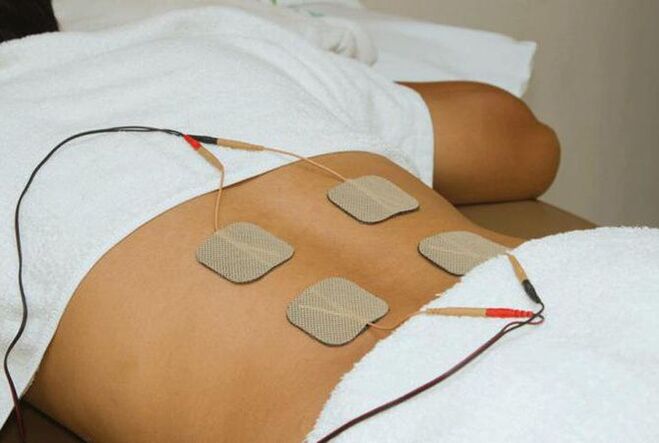
Attractive therapy
Tensile therapy allows you to increase the distance between the spinal vertebrae of the thoracic, which will reduce the pressure on the intervertebral discs affected by osteochondrosis.This will stop the progression of the disease and create optimal conditions for restoring cartilage tissue.Attractive therapy or spinal withdrawal is performed on a separate table under the supervision of medical professionals.
Thus, although thoracic osteochondrosis is not a common disease, it can significantly reduce a person's life quality and lead to the development of a number of internal organs pathologies.At the same time, the difficulty of diagnosing it works against the patient, as without proper treatment, degenerative changes in the intervertebral discs continue to deteriorate.As a result, complications often develop in such situations, including the formation of extensions and intervertebral hernia.Therefore, it is important not to ignore changes in well -being and immediately consult a doctor, and when diagnosing the chest osteochondrosis, follow the recommendations taken from it strictly.



















